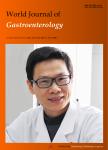Endoscopic resection of the pancreatic tail and subsequent wound healing mechanisms in a porcine model
Endoscopic resection of the pancreatic tail and subsequent wound healing mechanisms in a porcine model作者机构:Endoscopy Center Shengjing Hospital of China Medical University
出 版 物:《World Journal of Gastroenterology》 (世界胃肠病学杂志(英文版))
年 卷 期:2019年第25卷第21期
页 面:2623-2635页
核心收录:
学科分类:10[医学]
主 题:Pancreatic resection Endoscopy Wound healing Transforming growth factor-β1 Smad
摘 要:BACKGROUND Laparoscopic resection of the pancreatic body and tail is the predominant methodology to remove lesions in these locations;its safety and surgical planning are relatively mature, but it remains a complex and high-precision surgical operation, requiring abundant experience and skills in laparoscopic surgery, with a 10% rate of complications. AIM To verify the feasibility and safety, as well as to examine the complications of endoscopic pancreatectomy and healing mechanisms of pancreatic wounds after endoscopic resection. METHODS Transgastric endoscopic resections of varying sizes of pancreases were performed in 15 healthy Bama miniature pigs. The technical success rate, the incidence of serious complications, and the survival of the animals were studied. The healing of the wounds was evaluated by sacrificing the animals at various time points. Finally, the expression of transforming growth factor-β1 and Smad3/Smad7 in the surgical site was examined by immunohistochemistry to explore the role of these factors in wound healing of the pancreas. RESULTS Partial and total resections were successfully performed in two groups of animals, respectively. The technical success rate and the survival rate of the pigs were both 100%. We obtained 12 pancreatic tissue samples by endoscopic resection. The pancreatic wounds were closed with metal clips in one group and the wounds healed well by forming scars. There was a small amount of pancreatic leakage in the other group, but it can be fully encapsulated. The level of transforming growth factor-β1 (TGF-β1) in the wounds increased during the inflammatory and fibrous hyperplasia phases, and decreased in the scar phase. The expression of Smad3 paralleled that of TGF-β1, while the expression of Smad7 had an inverse relationship with the expression of TGF-β1. CONCLUSION Purely transgastric endoscopic resection of the pancreas is a safe, effective, and feasible procedure, but the incidence of pancreatic leakage in total pancre



